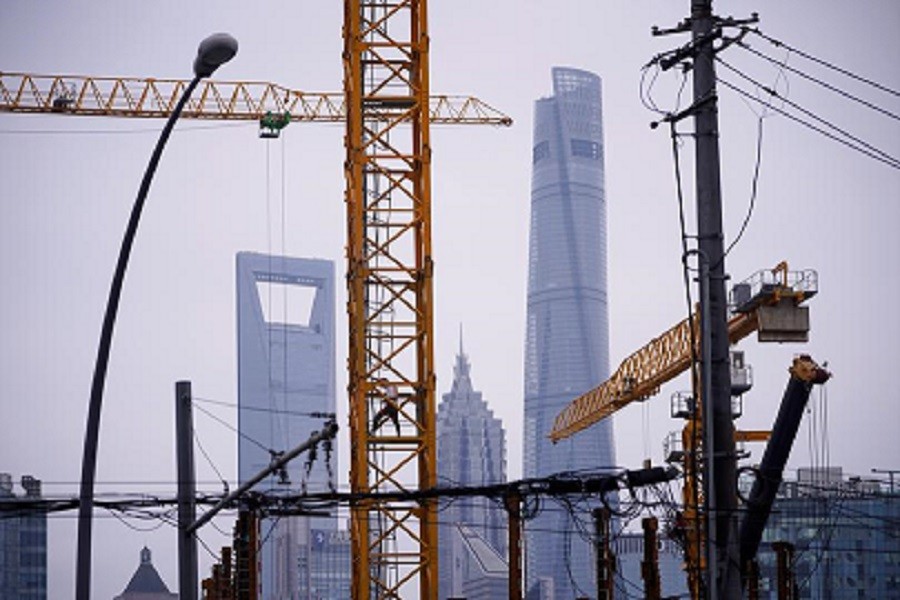China’s economy is expected to recover steadily in the rest of the year, boosted by stimulus measures to reverse the damage from the coronavirus crisis, but weak global demand and rising Sino-US tensions are key risks, a Reuters poll showed on Friday.
The world’s second-biggest economy is now expected to expand by 2.2 per cent in 2020, according to the median of 42 analysts surveyed by Reuters, up from 1.8 per cent projected in the last poll in April.
But that pace would still be the weakest since 1976 - the final year of Mao Zedong’s Cultural Revolution.
China’s economy expanded 3.2 per cent in the second quarter from a year earlier, following a record 6.8 per cent slump in the first three months of the year as the virus and strict measures to contain it paralysed much of the country.
But analysts warn that the rebound is heavily reliant on state-led investment, while consumption remains weak. National disposable income per capita fell 1.3 per cent in the first half of the year, according to official data.
Manufacturing and construction have snapped back relatively quickly, thanks largely to a massive infrastructure push and a rebound in homebuilding. But the services sector has lagged, with the catering, hospitality and entertainment sectors struggling to get back to normal amid worries of a resurgence of coronavirus cases and cautious consumer sentiment.
Exports have improved somewhat, largely due to massive demand for medical gear as the rest of the world battles the pandemic, though the shock of the health crisis is expected to depress global demand for some time to come.
“We still see growth uncertainties ahead from a bumpy and uneven reopening in other countries, a less favourable policy environment, and the loss of strong growth driver in consumption/services amid elevated uncertainty in the labour market,” said analysts from BofA Securities.
Deteriorating relations between Washington and Beijing are also clouding the outlook, though a Phase 1 trade deal signed earlier this year still appears to be intact.
In a dramatic worsening of ties this week, the United States demanded China shut its Houston consulate on accusations of “intellectual property theft”. China on Friday ordered the US to close its consulate in the southwestern city of Chengdu.
“Heightened U.S.-China tension, supply chain decoupling pressures and a subdued profit outlook could hit corporate sentiment and depress trade and manufacturing activities,” UBS Economist Tao Wang said.
Fiscal stimulus to spur growth
With the economy on the mend, China’s central bank does not see an immediate need to ease monetary policy further, but will keep conditions accommodative to support the recovery, policy sources told Reuters.
Analysts expect China will lower its one-year loan prime rate (LPR) by another 10 basis points (bps) to 3.75 per cent by the end of 2020. It has been cut by 46 bps since last August.
The poll also predicted no change to the current benchmark deposit rate. The PBOC has kept it untouched at 1.5 per cent since October 2015.
“Economic activity continued to strengthen going into Q3, and fiscal policy is set to boost activity for the remainder of the year,” Martin Rasmussen, China Economist with Capital Economics said in a note.
“That should allow the PBOC to step back from easing and instead focus on the financial risks that have accumulated this year.”
China’s consumer price index (CPI) in 2020 will likely rise 2.7 per cent from the previous year, slowing from a 2.9 per cent rise in 2019, according to the poll.
Analysts with Nomura predicted higher food prices in coming weeks as much of the country is battered by torrential rain and floods, but said the impact will likely be short-lived.


